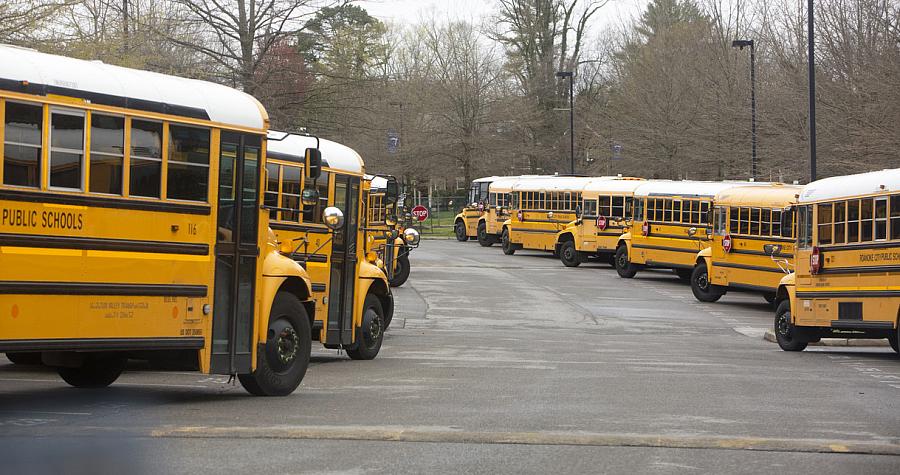When segregation persists in schools, whose responsibility is it?

(Photo via Claire Mitzel)
For nearly 40 years, school attendance zones in Roanoke, Virginia, hardly shifted. The patchwork map that started crosstown busing was first created as part of a 1971 court-ordered desegregation plan, and for decades, school officials said they saw no reason to make major changes.
By 2009, though, the attendance zones were long outdated. Demographic shifts meant that schools became segregated once again, and in many cases, Black students were being bused to majority-Black schools. In addition, the school district was facing a tight budget year made worse by busing expenses.
The school board finally decided to overhaul the attendance boundaries. Faced with three options, the board voted to end busing and send students to schools in their neighborhood. Among other reasons, they pointed to evidence that students seemed to fare better academically when attending schools close to home.
But residential segregation also persists, both in the city and larger metropolitan area, resulting in less diverse schools. That continues to this day.
Just this month, a report on school segregation in Virginia named Roanoke as the metro area with the highest level of segregation between Black and white students.
Roanoke also ranked in the bottom 10 cities in the nation for economic mobility in a 2015 Harvard University study. Economic and racial segregation play a role in the city’s generational poverty and violence.
The city’s history plays a role in how things play out in the modern day.
White flight took place during integration. Urban renewal in the mid-20th century — famously dubbed “negro removal” by the author James Baldwin — decimated Black neighborhoods and contributed to shifting housing patterns.
Last year, the city school system’s enrollment was 43% Black, 34% white and 15% Hispanic. But one-third of schools were at least two-thirds Black, Hispanic or white. Unsurprisingly, school demographics often mirror the demographics of the surrounding neighborhood.
Time and time again during town halls ahead of the 2009 vote, the community pondered: To whom does responsibility for diversity fall — the school system or entire community?
The 2020 Data Fellowship will assist me in exploring that very question. I plan to examine the long-term effects of racial segregation in Roanoke City Public Schools, focusing on students’ academic achievement, upward mobility and emotional well-being to see whether the 2009 decision fostered improvements or exacerbated inequities.
It’s been more than a decade since the school board revamped the attendance map. It’s been 50 years since schools first desegregated. The school system has made large strides in providing all students an equitable education. Still, I have to ask: What are the lasting effects of the decisions made decades ago and more recently? And what is the school board’s responsibility in creating diverse schools?
Using demographic and benchmark data in the four years before and after the 2009 attendance zone change, I will examine demographics, academic achievements and health outcomes of students in the city’s 24 schools. I also plan to tap into Virginia Department of Education databases and draw on reports and maps from the school system to look more in-depth at the 2009 decision and the 38 years prior.
Data and documents will only take me so far, though. The heart of the story will come from talking with teachers and families, especially those of whom experienced busing for generations before transitioning to their neighborhood schools. I also plan to draw on interviews with the 2009 decision makers and speak with experts to determine how the district could become more equitable in its attendance boundaries.

